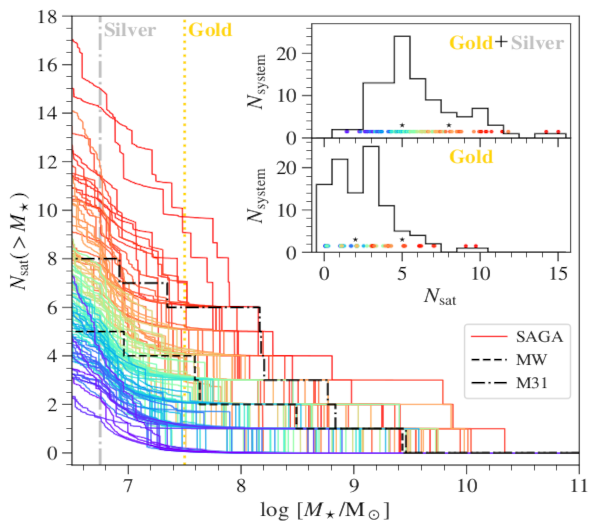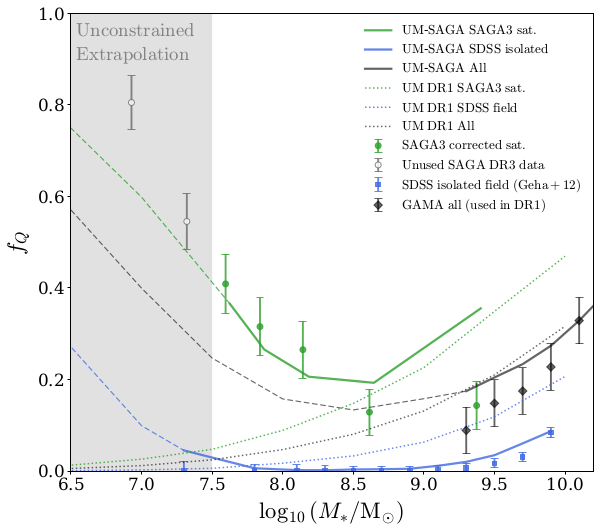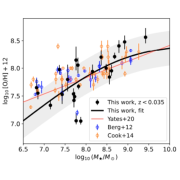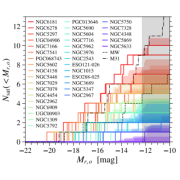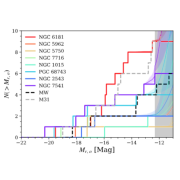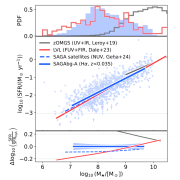
SAGA-bg II: the Low-Mass Star-Forming Sequence Evolves Significantly Between 0.05<z<0.21
We use SAGA background galaxies to study the redshift-dependent relation between galaxy stellar mass and star formation rate (the Star-Forming Sequence, or SFS), and identified a significant low-redshift evolution of the low-mass SFS.
